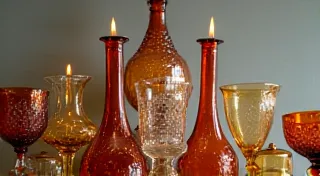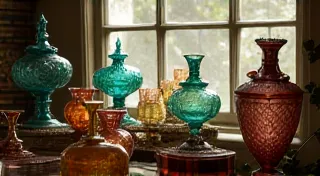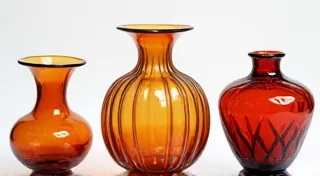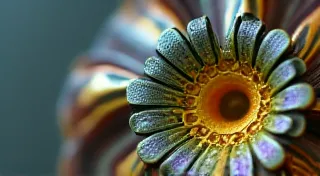Carnival Glass and its Connection to the 'Whitefriars' Company
Carnival glass, with its dazzling iridescent sheen and vibrant colors, captivates collectors worldwide. While often associated with American production, its story is deeply intertwined with the legacy of the renowned British glasshouse, Whitefriars. Understanding this connection adds another layer of appreciation for both Carnival glass and the artistry of Whitefriars.
The Rise of Carnival Glass and the American Inspiration
The "Carnival" craze in America, peaking in the 1920s and 1930s, involved distributing glassware as prizes at carnivals and fairs. This marketing strategy fueled enormous demand for affordable, eye-catching pieces. American glass manufacturers, such as Fenton, Northwood, and Imperial, quickly responded by producing large quantities of iridescent glass using a technique called flashing – layering a thin coating of metallic oxides onto the hot glass during manufacture. This gave the glass its signature shimmering effect. The sheer variety and range of pieces produced during this period can be overwhelming for new collectors; those looking to truly delve into the world of Carnival glass may find the best resources for Carnival glass collectors invaluable in understanding the landscape and identifying potential finds. This period also spurred significant innovation in glass production techniques, showcasing American ingenuity.
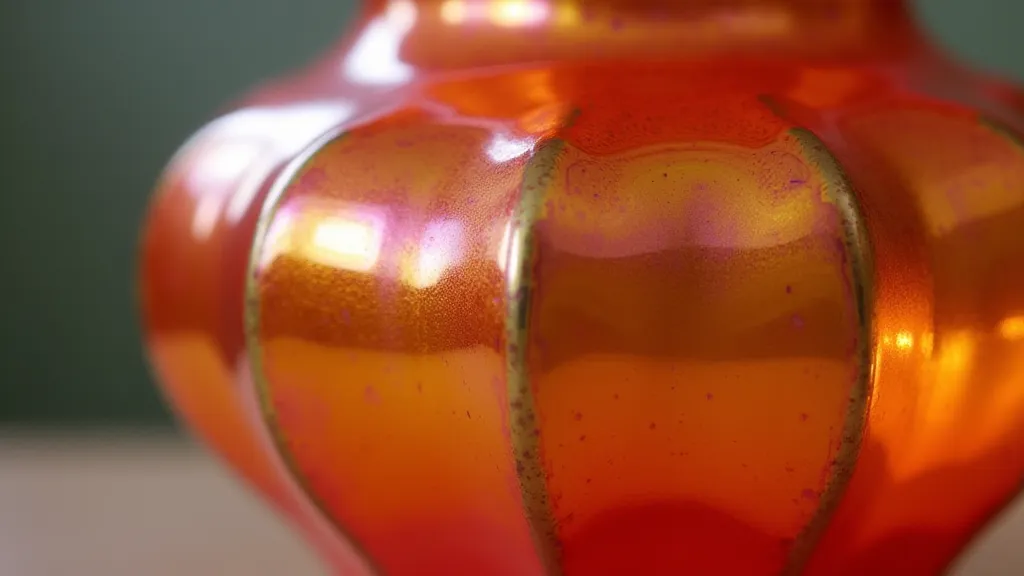
Whitefriars: A Precursor to the Carnival Craze
However, the technology behind this flashing process wasn't entirely new. British glasshouses, particularly Whitefriars, had been experimenting with iridescent glass for decades prior. Founded in 1689, Whitefriars had a long and distinguished history of producing high-quality glass, ranging from windows and bottles to ornate decorative pieces. By the late 19th century, they were already producing "flashed" or "iridescent" glass, though often more subtly and with a different aesthetic than the vibrant, mass-produced Carnival glass that emerged in America. The subtle beauty and refined techniques employed by Whitefriars represent a significant contrast to the more exuberant styles of American Carnival glass. The history of glassmaking, especially the evolution of techniques like flashing, is a fascinating subject, and Whitefriars' contributions are integral to understanding this development.
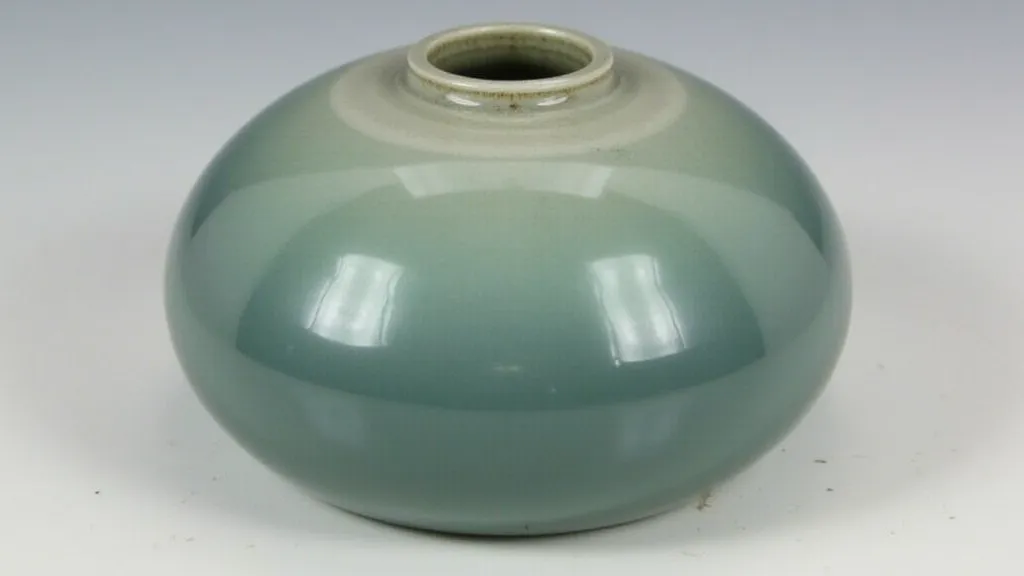
The Influence of Whitefriars Techniques
American glassmakers drew heavily on Whitefriars’ existing knowledge and processes. While the scale and marketing tactics differed greatly, the underlying technique of applying metallic oxides to the glass surface to achieve iridescence originated in British glasshouses like Whitefriars. Many American manufacturers would have studied Whitefriars’ catalogs and patterns for inspiration, inadvertently incorporating elements of their style into their own productions. Identifying specific patterns and understanding the variations can be complex, and collectors often benefit from detailed guides. For those looking to systematically learn how to identify various Carnival glass patterns, a useful guide can be found identifying Carnival glass patterns. The evolution of design aesthetics, and how British styles influenced American trends, offers a compelling look at cultural exchange and innovation.
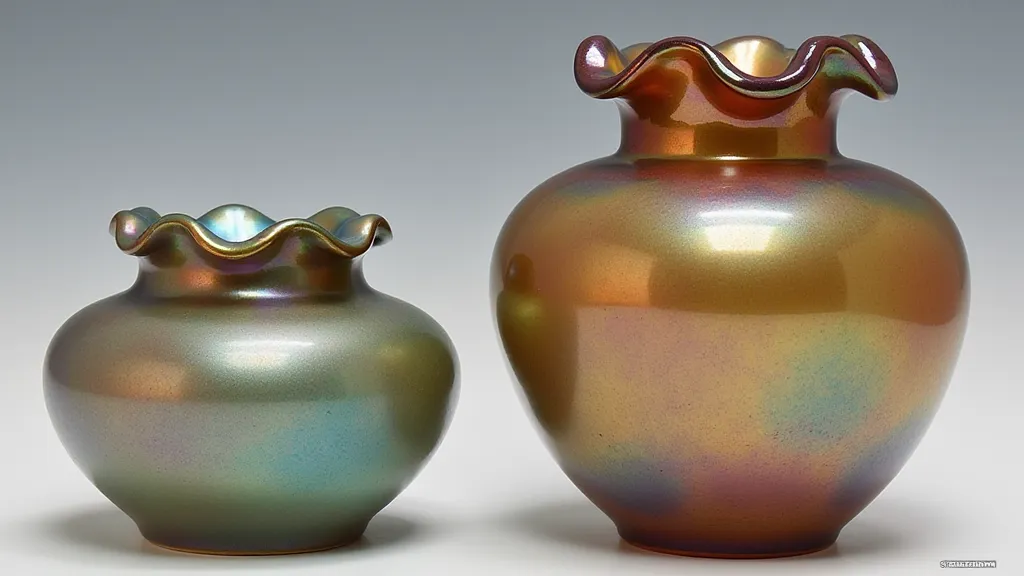
Distinctive Differences and Collecting Considerations
While acknowledging the shared lineage, it's crucial to distinguish between Whitefriars iridescent glass and true Carnival glass. Whitefriars pieces generally exhibit a more restrained and sophisticated iridescence, often with a more subtle color palette. They frequently incorporate classic designs and artistic motifs, reflecting their higher-end positioning. Carnival glass, on the other hand, tended to be more boldly colored and focused on mass appeal. The diversity of colors in Carnival glass is another area of fascination for collectors, and the subtle nuances can significantly impact value and desirability. Learning to identifying Carnival glass colors, from the common emerald green to the coveted "Vaseline," is a crucial step in appreciating and collecting these pieces. The impact of marketing and consumer trends on color choices and production scales is a significant factor in understanding the differences between these two glass traditions.
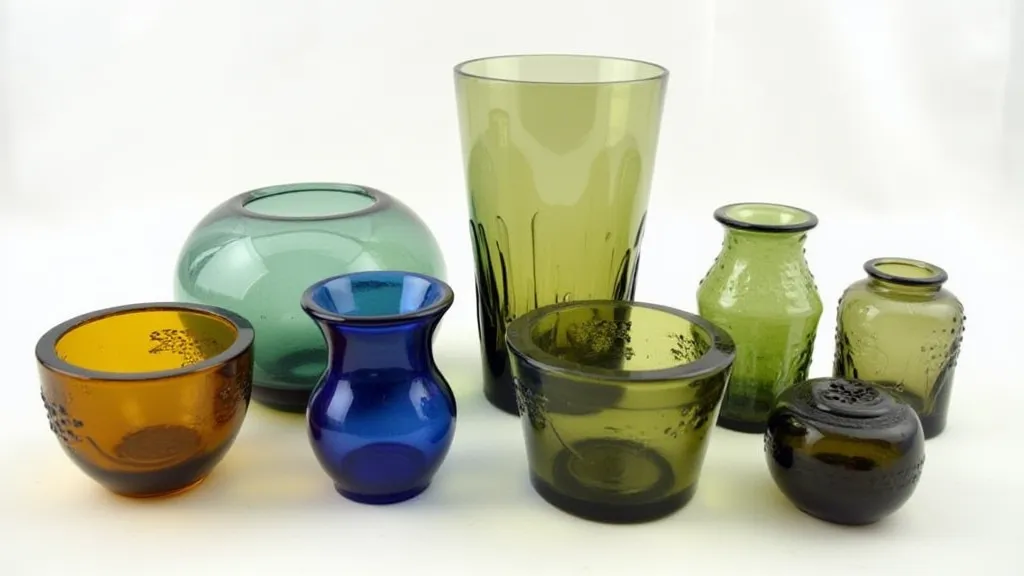
Deeper Dive into Color and Rarity: "Peachblow" Carnival Glass
Within the realm of Carnival glass, certain colors are exceptionally sought after. Among the most prized is “Peachblow,” a delicate and ethereal hue that exemplifies the artistry of the era. Its name derives from its resemblance to the flesh of ripe peaches, and its rarity contributes significantly to its value. The precise reasons for its limited production remain somewhat shrouded in mystery, adding to its mystique. Collectors dream of acquiring a genuine Peachblow piece, and understanding its characteristics is vital for authentication. You can find more details about Spotlight on 'Peachblow' Carnival Glass for more information on this particular treasure. Examining the technical challenges and economic factors that contributed to the rarity of certain colors like Peachblow provides valuable insight into the glassmaking industry of the time.
The History of Whitefriars: From Humble Beginnings to Glassmaking Giants
The Whitefriars glasshouse’s history is a compelling narrative of innovation, adaptation, and resilience. Its roots stretch back to 1689, when it was established in London, initially producing window glass. Over the centuries, the company evolved, diversifying its product line to encompass a wide range of glassware, from utilitarian bottles to exquisitely crafted decorative objects. The ability to adapt to changing market demands was a key factor in Whitefriars' longevity, and its commitment to quality consistently set it apart from its competitors. The early years of Whitefriars, and their contribution to the evolution of the British glass industry, offer a fascinating look at industrial development in the 18th and 19th centuries.
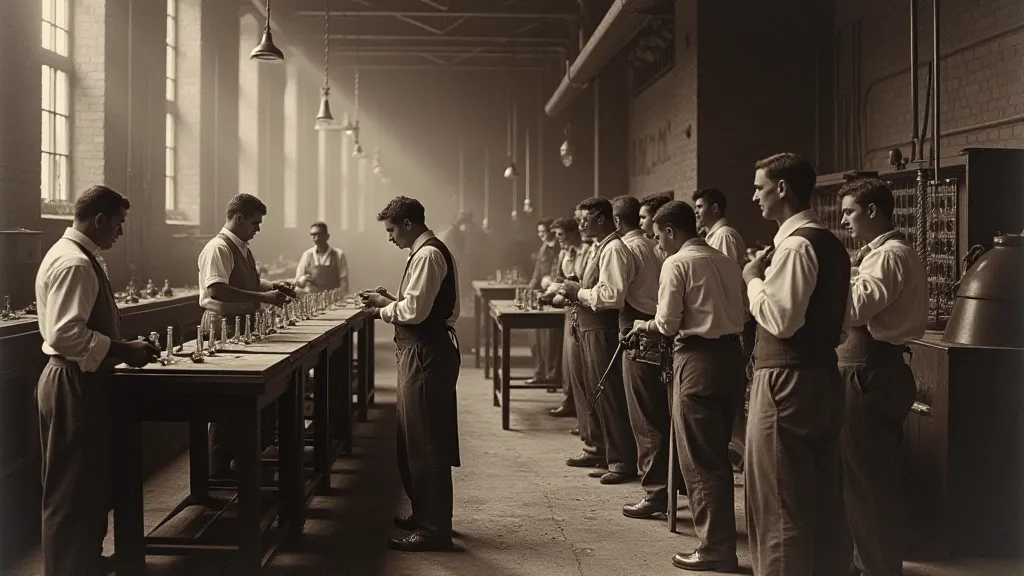
Collecting Whitefriars: A Refined Approach
Collecting Whitefriars glass requires a slightly different mindset than collecting Carnival glass. While both offer immense rewards, the approach to acquisition and appreciation differs. Collectors of Whitefriars often prioritize rarity, provenance (the history of ownership), and the aesthetic quality of the piece. Understanding the historical context of each piece enhances its value and significance. Recognizing the marks and signatures used by Whitefriars can also aid in authentication and dating. Many pieces bear distinctive factory marks, providing clues about their origin and production period. Furthermore, appreciating the subtle nuances in color and design separates the casual observer from the discerning collector. Beyond aesthetics, the quality of the glass itself is a defining characteristic of Whitefriars pieces. The clarity and thickness of the glass often reflect the company’s commitment to excellence.
Comparing Carnival and Whitefriars: Beyond the Surface
While Carnival glass and Whitefriars glass share a common technical ancestry – the use of flashed iridescent coatings – their overall aesthetic and market positioning differ significantly. Carnival glass was designed for mass appeal, prioritizing vibrant colors and readily reproducible patterns. The lower production costs allowed for wider distribution and affordability. Whitefriars glass, on the other hand, represented a higher-end product, catering to a more discerning clientele. The designs were often more refined and incorporated elements of classic artistic traditions. Understanding these differences allows collectors to appreciate the unique qualities of each type of glass. The influence of British design aesthetics is particularly evident in Whitefriars pieces, while American Carnival glass reflects the spirit of innovation and mass production that characterized the early 20th century. The intersection of artistic trends, technological advancements, and economic forces shaped the distinct character of these glass traditions.
The Enduring Legacy of Two Glassmaking Traditions
The story of Carnival glass and its connection to Whitefriars is a fascinating testament to the global exchange of ideas and techniques in the world of glassmaking. Whether you're captivated by the vibrant hues of American Carnival glass or the understated elegance of Whitefriars, appreciating the shared history enhances your appreciation of these beautiful and collectible pieces. The legacy of Whitefriars continues to inspire glassmakers today, and its innovations remain a benchmark for quality and design. The story of Carnival glass serves as a reminder of the power of marketing and the enduring appeal of beautiful, affordable objects. Both traditions contribute significantly to the rich tapestry of glassmaking history. Further exploration into the history of British glassmaking is vital for a deeper understanding of the broader context from which these art forms emerged.
